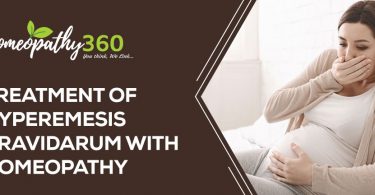ABSTRACT
Atopic Eczema is the most prevalent in all skin disease which accounts for 10 – 20 % cases & has been steadily growing in recent times. The present study was undertaken to know the role of homoeopathic medicine in the treatment of eczema with the help of Dr william boericke materia medica & Repertory, The present study has been taken up with the following objectives such as to study presentation of eczema in clinical practice & characteristics features of william boericke materia medica & Repertory.
INTRODUCTION
Atopic eczema is a chronic, highly pruritic (itchy) inflammatory skin disease, and is one of the most common skin disorders in children. [1] The disorder results in significant morbidity and adversely affects the quality of life. [2] The patients are not only affected by the social stigma of a visible skin condition, but the intense itching characteristic of the disease often leads to skin trauma and significant sleep disturbances. In addition, management of the condition necessitates the frequent application of emollients (agents that soothe, moisturize and soften the skin) and topical medications, as well as physician visits. Atopic eczema also poses a significant economic burden with an estimated annual cost in Canada of $1.4 billion. [3]
Current evidence suggests that Atopic eczema is a primary skin barrier defect that facilitates the development of other atopic conditions. [4, 5] In fact, Atopic eczema is often the initial step in the “atopic march” (the sequential development of allergic disease manifestations during early childhood), which leads to asthma and/or allergic rhinitis in the majority of afflicted patients. [6] Early Atopic eczema may also be a causative factor in the development of food allergy. [7]
DIAGNOSIS
There are no specific diagnostic tests for AD. Diagnosis of the disorder is based on specific criteria that take into account the patient’s history and clinical manifestations. Although various diagnostic criteria for AD have been proposed and validated, the application of many of these criteria is time-consuming and often necessitates invasive testing. The simplified criteria proposed by Williams et al. that are easy to use, do not require invasive testing and have been shown to have a high sensitivity and specificity for the diagnosis of AD [8–10]. Using these criteria, the diagnosis of AD requires the presence of an itchy skin condition (or parental/caregiver reports of scratching or rubbing in a child) plus three or more minor criteria, which vary depending on the patient’s age.
Diagnostic criteria for Atopic eczema [8–9]
Major criteria
Patient must have
• An itchy skin condition (or parental/caregiver report of scratching or rubbing in a child)
Minor criteria
Plus three or more of the following minor criteria
Older children/adults
• History of itchiness in skin creases (e.g., folds of elbows, behind the knees, front of ankles, around the neck)
• Personal history of asthma or allergic rhinitis
• Personal history of general dry skin in the last year
• Visible flexural dermatitis (i.e., in the bends or folds of the skin at the elbow, knees, wrists, etc.)
• Onset under age 2 years
Children < 4 years
• History of itching of the cheeks
• History of atopic disease in a first-degree relative
• Eczema of cheeks, forehead and outer limbs
Early-onset not always diagnostic in children under 4 years of age
HOMOEOPATHIC APPROACH WITH BOERICKE’S REPERTORY (11)
Homoeopathy is a medical science based on the law of similia similibus curanter, Homoeopathic science is based on individualization in which prescription is done on the basis of Totality of symptoms. Homoeopathic approach towards management of Eczema is constitutional taking into account the patient’s physical symptoms along with their mental and genetic makeup that individualizes the person. Early intervention with Homeopathy can assist in preventing further progress and cures eczema.
In this study, I am taking the help of The Pocket Manual of Homoeopathic Materia Medica & Repertory, in treating atopic eczema and try to access its usefulness in such cases. It is written by Dr Oscar E.Boericke, M.D. It is the most widely used bedside clinical repertory which has been attached to Homoeopathic Materia Medica by William Boericke, M.D. the repertory compilation is mainly based on the Materia Medica by William Boericke. It is a Clinical repertory and it was completely remodelled and brought up to date by embodying much of the available material. It was published in 1927. These repertories facilitate the election of a remedy on the basis of pathological similarity, causation, modalities and concomitants. These repertories can be used for repertorization of cases where clinical conditions mask the characteristics of the patient. In such cases, the physician finds prominent common symptoms with a few modalities and concomitants. These cases need the help of clinical repertory
PLAN & CONSTRUCTION OF REPERTORY
Boericke’s Pocket Manual of Homoeopathic Materia Medica & Repertory comprised of four sections. Its first section is of Materia Medica written by Dr W. Boericke, second section comprised of Repertory compiled by Dr Oscar .E. Boericke, the third section contains Therapeutics and in the last section, Index is given.
The repertory has a total of 1409 medicines, Technical /clinical terms are often used as rubrics. Remedies are arranged in alphabetical order and the italics indicate the more frequently verified clinical remedy. Because of two types of typography used to indicate the intensity of remedies, it is more practical for reference work and Repertoriztaion.
RUBRICS FOR ECZEMA
ECZEMA — Ćthiops, Alnus, Alum., Anac., Anthrok., Ant. c., Arbut., Ars., Ars. iod., Berb. aq., Berb. v., Bor., Bov., Calc. c., Canth., Caps., Carb. ac., Carbo v., Castor eq., Caust., Chrysar., Cic., Clem., Commocl., Con., Crot. t., Dulc., Euphorb., Fluor. ac., Frax. am., Fuligo, Graph., Hep., Hippoz., Hydrocot., Jugl. c., Kali ars., Kali m., Kreos., Lyc., Mang. ac., Merc. c., Merc. d., Merc. pr. rub., Merc. s., Mez., Mur. ac., Nat. ars., Nat. m., Nux v., Śland., Persicaria, Petrol., Piloc., Plumb., Pod., Prim. v., Psor., Rhus t., Rhus v., Sars., Sep., Skook. ch., Sul., Sul. iod., Thuya, Tub., Ustil., Vinca, Viola tr., Xerophyl., X-ray.
Acute form — Acon., Anac., Bell., Canth., Chin. s., Crot. t., Mez., Rhus t., Sep.
Ears, behind (See Ears.) — Ars., Arundo, Bov., Chrysarob., Graph., Hep., Jugl. r., Kali m., Lyc., Mez., Oleand., Petrol., Psor., Rhus t., Sanic., Scrophul., Sep., Staph., Tub.
Face [of] (See Face.) — Anac., Ant. c., Bac., Calc. c., Carb. ac., Cic., Col., Cornus c., Crot. t., Hyper., Kali ars., Led., Merc. pr. rub., Psor., Rhus t., Sep., Staph., Sul., Sul. iod., Vinca.
Flexures of joints [of] — Ćth., Am. c., Caust., Graph., Hep., Kali ars., Lyc., Mang. ac., Nat. m., Psor., Sep., Sul.
Hands [of] (See Hands – Locomotor System.) — Anag, Bar. c., Berb. v., Bov., Calc. c., Graph., Hep., Hyper., Jugl. c., Kreos., Malandr., Petrol., Pix l., Plumb., Rhus v., Sanic., Selen., Sep., Still.
Neurasthenic persons [of] — Anac., Ars., Phos., Strych. ars., Strych. p., Viola tr., Zinc. p.
Pudendum [of] (See Female Sexual System.) — Am. c., Ant. c., Ars., Canth., Crot. t., Hep., Plumb. m., Rhus t., Sanic., Sep.
Rheumatico-gouty persons [of] — Alum., Abrut., Lact. ac., Rhus t., Uric. ac., Urea.
Scalp [of] (See Head.) — Astac., Berb. aq., Calc. c., Cic., Clem., Fluor. ac., Hep., Kali m., Lyc., Mez., Nat. m., Oleand., Petrol., Psor., Sep., Selen., Staph., Sul., Tub., Vinca, Viola od.
Strumous persons [of] — Ćthiops, Ars. iod., Calc. c., Calc. iod., Calc. p., Caust., Cistus, Crot. t., Hep., Merc. c., Merc. s., Rumex, Sep., Sil., Tub.
Whole body [of] — Crot. t., Rhus t.
Madidans — Cic., Con., Dulc., Graph., Hep., Kali m., Merc. c., Merc. pr. rub., Mez., Sep., Staph., Tub., Viola tr.
Pigmentation in circumscribed areas following [with] — Berb. v.
Urinary, gastric, hepatic disorders — Lyc.
Worse
Vaccination [after] — Mez.
Menstrual period [at], menopause — Mang. ac.
Seashore [at], ocean voyage, excess of salt — Nat. m.
DISCUSSION
Atopic dermatitis is a common, chronic skin disease that starts early in life and can adversely impact the quality of life of patients and their caregivers. This study will help you to diagnose atopic dermatitis in day to day practice & its homoeopathic management through William Boericke’s Materia Medica & Repertory.
REFERENCES
1. Krakowski AC, Eichenfield LF, Dohil MA. Management of atopic dermatitis in the pediatric population. Pediatrics. 2008;122:812–824. doi: 10.1542/peds.2007-2232. [PubMed] [CrossRef] [Google Scholar]
2. McKenna SP, Doward LC. Quality of life of children with atopic dermatitis and their families. Curr Opin Allergy Clin Immunol. 2008;8:228–231. doi: 10.1097/ACI.0b013e3282ffd6cc. [PubMed] [CrossRef] [Google Scholar]
3. Barbeau M, Bpharm HL. Burden of atopic dermatitis in Canada. Int J Dermatol. 2006;45(1):31–36. doi: 10.1111/j.1365-4632.2004.02345.x. [PubMed] [CrossRef] [Google Scholar]
4. Egawa G, Kabashima K. Multifactorial skin barrier deficiency and atopic dermatitis: essential topics to prevent the atopic march. J Allergy Clin Immunol. 2016;138(2):350–358. doi: 10.1016/j.jaci.2016.06.002. [PubMed] [CrossRef] [Google Scholar]
5. Nomura T, Kabashima K. Advances in atopic dermatitis in 2015. J Allergy Clin Immunol. 2016;138(6):1548–1555. doi: 10.1016/j.jaci.2016.10.004. [PubMed] [CrossRef] [Google Scholar]
6. Spergel JM, Paller AS. Atopic dermatitis and the atopic march. J Allergy Clin Immunol. 2003;112:S128–S139. doi: 10.1016/j.jaci.2003.09.033. [PubMed] [CrossRef] [Google Scholar]
7. Tsakok T, Marrs T, Mohsin M, Baron S, du Toit G, Till S, Flohr C. Does atopic dermatitis cause food allergy? A systematic review. J Allergy Clin Immunol. 2016;137(4):1071–1078. doi: 10.1016/j.jaci.2015.10.049. [PubMed] [CrossRef] [Google Scholar]
8. Williams HC, Burney PG, Hay RJ, Archer CB, Shipley MJ, Hunter JJ, Bingham EA, Finlay AY, Pembroke AC, Graham-Brown RA. The U.K. Working Party’s diagnostic criteria for atopic dermatitis. I. Derivation of a minimum set of discriminators for atopic dermatitis. Br J Dermatol. 1994;131:383–396. doi: 10.1111/j.1365-2133.1994.tb08530.x. [PubMed] [CrossRef] [Google Scholar]
9. Williams HC, Burney PG, Pembroke AC, et al. The U.K. Working Party’s diagnostic criteria for atopic dermatitis. III. Independent hospital validation. Br J Dermatol. 1994;131:406–416. doi: 10.1111/j.1365-2133.1994.tb08532.x. [PubMed] [CrossRef] [Google Scholar]
10. Gu H, Chen XS, Chen K, Yan Y, Jing H, Chen XQ, Shao CG, Ye GY. Evaluation of diagnostic criteria for atopic dermatitis: validity of the criteria of Williams et al in a hospital-based setting. Br J Dermatol. 2001;145:428–433. doi: 10.1046/j.1365-2133.2001.04379.x. [PubMed] [CrossRef] [Google Scholar]
11. https://www.homeobook.com/allergic-rhinitis-and-utility-of-boericks-repertory/
KEYWORDS: Boericke Materia Medica, Materia Medica by William Boericke, William Boericke Books, william boericke materia medica





